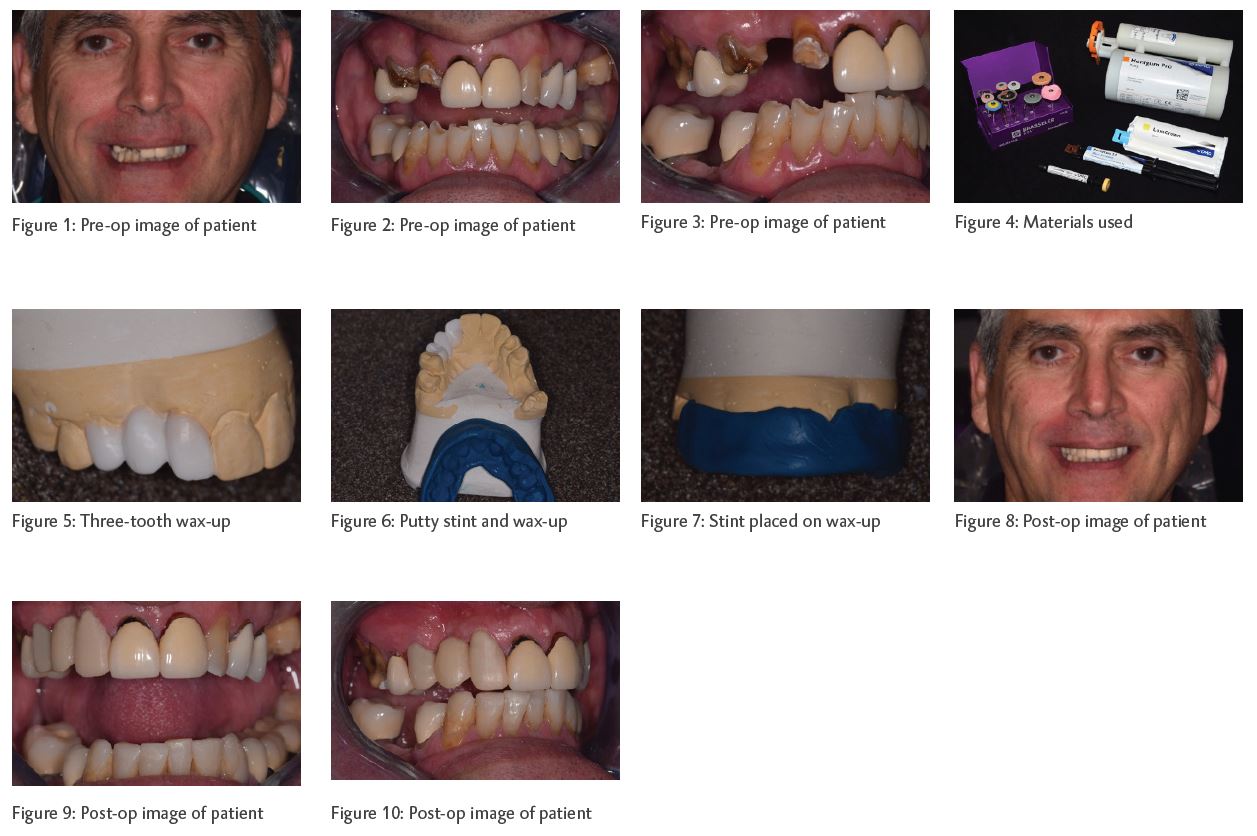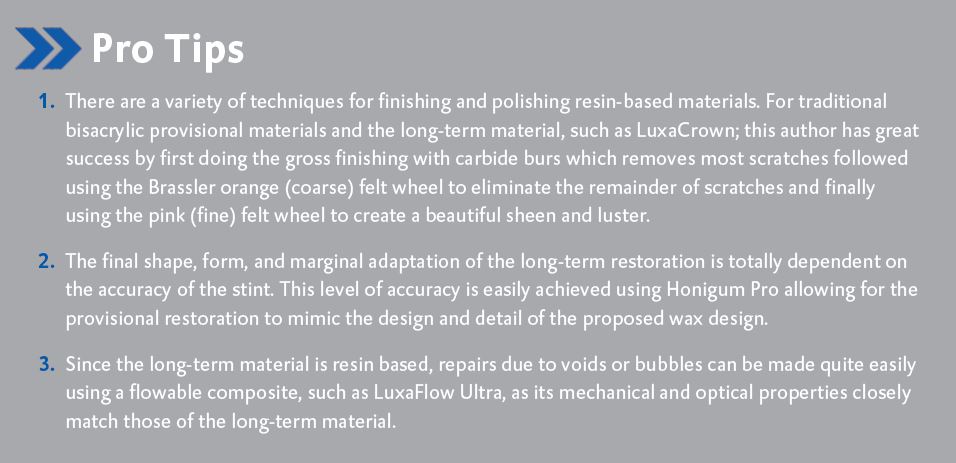Written by Jack Ringer, DDS, FAACD, FIADFE
Introduction
A dentist’s biggest challenge is to treat an anterior dental emergency where the patient needs an immediate biological deficiency corrected as well as an acceptable esthetic outcome. Until recently, these challenges were particularly problematic when a patient’s financial situation made it necessary to delay a permanent restoration for several years. In such cases, the only option was to pursue a phased approach utilizing provisional restorations until the patient could afford a permanent solution. However, a significant obstacle to such an approach has been the inability of provisional restorations to last until the permanent restoration was affordable. Now, a new long-term crown and bridge material (LuxaCrown, DMG) makes it possible to create restorations that are long-lasting.
The case below describes and illustrates a technique as well as related materials that will enable practices confronted with such challenges to efficiently and cost-effectively create biologically sound, predictably long-lasting and esthetically pleasing long-term restorations chairside.
Case Report
An otherwise healthy male patient in his 40s presented with teeth #s 9 and 11 broken off due to failure of an old three-unit fixed porcelain-fused-to-metal bridge. In addition, the patient exhibited many failing restorations, both periodontal and dental disease, and missing dentition (including tooth #6) (Figures 1-3). The patient was committed to addressing his dental condition comprehensively, but it was agreed that it would take several years to complete the therapy due to his financial challenges.
The necessary materials were gathered to create a restoration for teeth # 5-7 (Figure 4). An alginate type impression was taken of the pre-operative condition and a quick set stone model was poured, after which a quick but proportional three-tooth wax-up was created (Figure 5). A putty stint (Figure 6) was modeled chairside over the wax-up using a vinyl polysiloxane impression material system (Honigum Pro, DMG) and extended over a few teeth on either side of the proposed bridge (Figure 7). The damaged teeth were prepared to remove any deficient or diseased tooth structure. The stint was tried in to confirm its fit. It was then filled with an esthetic bis-acrylic long-term crown and bridge material (LuxaCrown, DMG) and placed over the teeth. While the colors of the patient’s existing teeth were all different, the LuxaCrown color chosen blended well enough to yield a pleasing esthetic outcome.
After the material was set, the provisional bridge was trimmed and polished with a finishing and polishing kit (Spear Provisional System, Brassler) and cemented using a self-adhesive resin cement (PermaCem 2.0, DMG). If any bubbles or voids had been present, they could have been easily filled using a flowable composite (LuxaFlow Ultra, DMG).
Due to the superior strength of the long-term crown and bridge material and the proper sealing and luting of the restoration with a self-adhesive resin cement, both the patient and dentist can have confidence that the restoration will be both durable and aesthetically pleasing while the patient engages in the protracted full mouth treatment (Figs. 8 -10).


